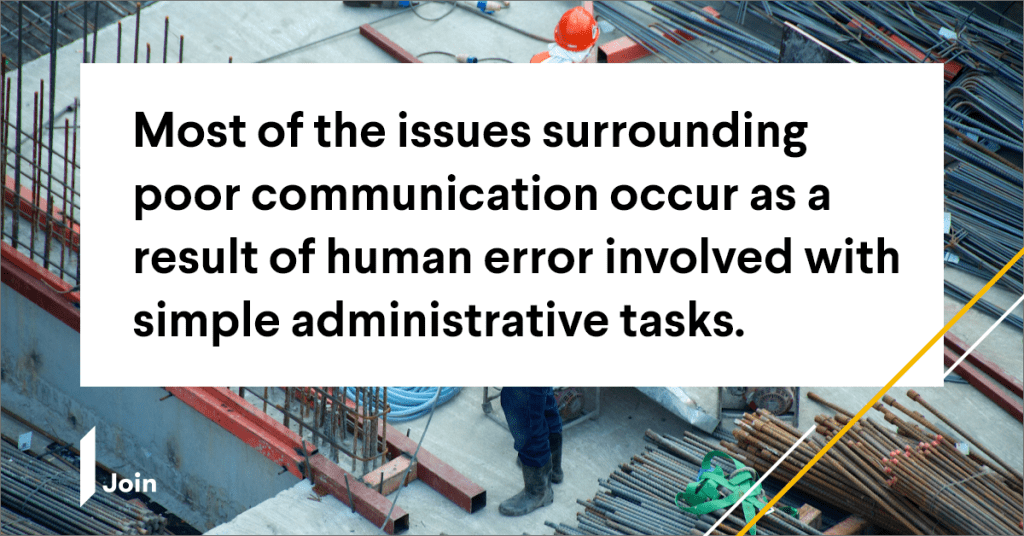How to Decrease Labor Costs by Leveraging Your Historical Project Data
How to decrease labor costs by leveraging your historical data
Not only is labor the most expensive part of construction, but it also is often the most volatile line item. Labor shortages and inefficient labor can delay projects from pre-construction through the end of a build due to lack of expertise and general manpower. On the flipside, by leveraging historical data, contractors and owners can improve productivity, forecast labor needs, and actually maintain or increase profitability even during a labor shortage.
In this article, we will explain the areas in which data integrity establishes consistent productivity within projects, how that data will empower you to predict and plan for labor shortages, and how to leverage all of this to stay profitable.
Capture data efficiently to establish productivity
Data is essential to all construction projects, and your team is sharing it daily — whether through occasional emails, various spreadsheets, or a data tracking tool. Capturing good data and establishing data integrity, however, eliminate productivity issues that can become costly, especially in regards to labor. Let’s examine how ineffective data capture hurts productivity.
Improve communication
By its nature, the construction industry faces serious communication hurdles: employees are often dispersed between job sites and offices, subcontractors and other specialists join the project at varied times, and work orders and decision rationales can hit different desks at different times.
According to a 2020 FMI Industry report, construction industry professionals spent, on average, over 14 hours per week on tasks like looking for project information and dealing with rework. By using a cloud-based decision-making platform like Join, decisions and their results are compiled into a single resource that all stakeholders can both add to and reference. Improved communication can save hours of non-productive labor if a team is no longer searching for project information or is able to dramatically reduce or eliminate rework.

Automate administrative work
In the same vein, most of the issues surrounding poor communication occur as a result of human error involved with simple administrative tasks. For example, it is admittedly easy to forget to forward an email attachment from a supplier noting that materials are delayed.

However, by forgetting to inform all stakeholders of this change, workers could show up unnecessarily, money from the budget needed to cover the escalating cost could be allocated elsewhere, and the subsequent schedule could be impacted.
In contrast, by automating the sharing of this simple piece of data, all stakeholders will be informed and have the information to quickly reference when adjusting accordingly; the delay, reasoning, and any subsequent costs will also be recorded for reference on future projects.
Ensure data integrity
Teams should record all project decisions, costs, changes, and delays in a single source of entry. This prevents the mistakes that come from traditional data collection and administrative work, while eliminating inefficiencies.
By protecting data integrity, teams are prepared to leverage the resulting historical data to make informed project decisions around labor, schedule, materials, and overall budget, which will reduce inefficiencies and pave the way for higher productivity and profitability.
Leverage data to increase productivity
The value of efficient data collection and data integrity goes far beyond simply reducing unproductivity. How construction groups then use that invaluable historical data actually increases productivity, ensuring labor is hired and scheduled efficiently and the project stays on track.
Compare past work to predict labor needs
With historical data, project managers can make data-driven decisions around each job. Firstly, by comparing similar past jobs, contractors can create project timelines that detail how long each piece of a project will take. Additionally, by recording every piece of data in past projects, contractors also have a strong, accurate understanding of trade partners’ ability to deliver specified work within the schedule necessitated by any given job.
With these two data sets, managers actually can predict labor needs on a reliable and actionable schedule and hire accordingly. Labor will be on-site when it’s needed, preventing delays and ensuring work stays on pace and optimally productive.
Record and leverage data to reduce rework
Rework is detrimental to the bottom line as labor and materials are paid for twice over, while the schedule itself is impacted. In fact, a recent study found that rework amounts to 19% of a project’s total costs.

In the United States, 48% of rework is attributed to poor project data and miscommunication. In contrast, by utilizing a cloud-based decision-making platform like Join, contractors ensure data integrity and eliminate communication issues because all stakeholders have access to decisions through each stage of a project. By reducing rework, contractors establish additional safeguards around productivity, protecting the schedule and ensuring owners can make use of their spaces without delay.

Plan for and stay profitable during labor shortages
Labor shortages introduce serious concerns for project schedules. While a shortage itself may be out of contractors’ control, contractors can stay ahead of labor shortage-induced problems by making data-driven decisions based on past projects that protect the budget and ensure profitability.
Ensure labor Is managed efficiently
Data analytics software allows contractors to create accurate project schedules and forecast labor needs accordingly. When empowered to hire teams as early as possible and stay on schedule, contractors can ensure crews are available and working productively so that delays or rework do not introduce additional concerns during a labor shortage.
Leverage decision history of project specialists
By recording decisions during projects and by ensuring all stakeholders have easy access to input and utilize data, contractors end each project with invaluable information from project specialists and subcontractors. Over the course of multiple projects, the record of what decisions were made strengthens the overall data: project managers can make data-driven decisions early in future projects, based on the past decisions of expert subcontractors.
Develop trust with the best individuals and teams
While visibility and transparency into a project develops trust with owners, this also translates into relationships with workers. By making data-driven decisions to reduce or eliminate overrun or delays, contractors ensure teams stay on schedule; this, in turn, means employees know when they need to show up for a job and when they get paid. When the market favors workers, it is imperative that contractors stand out as reliable and dependable.

